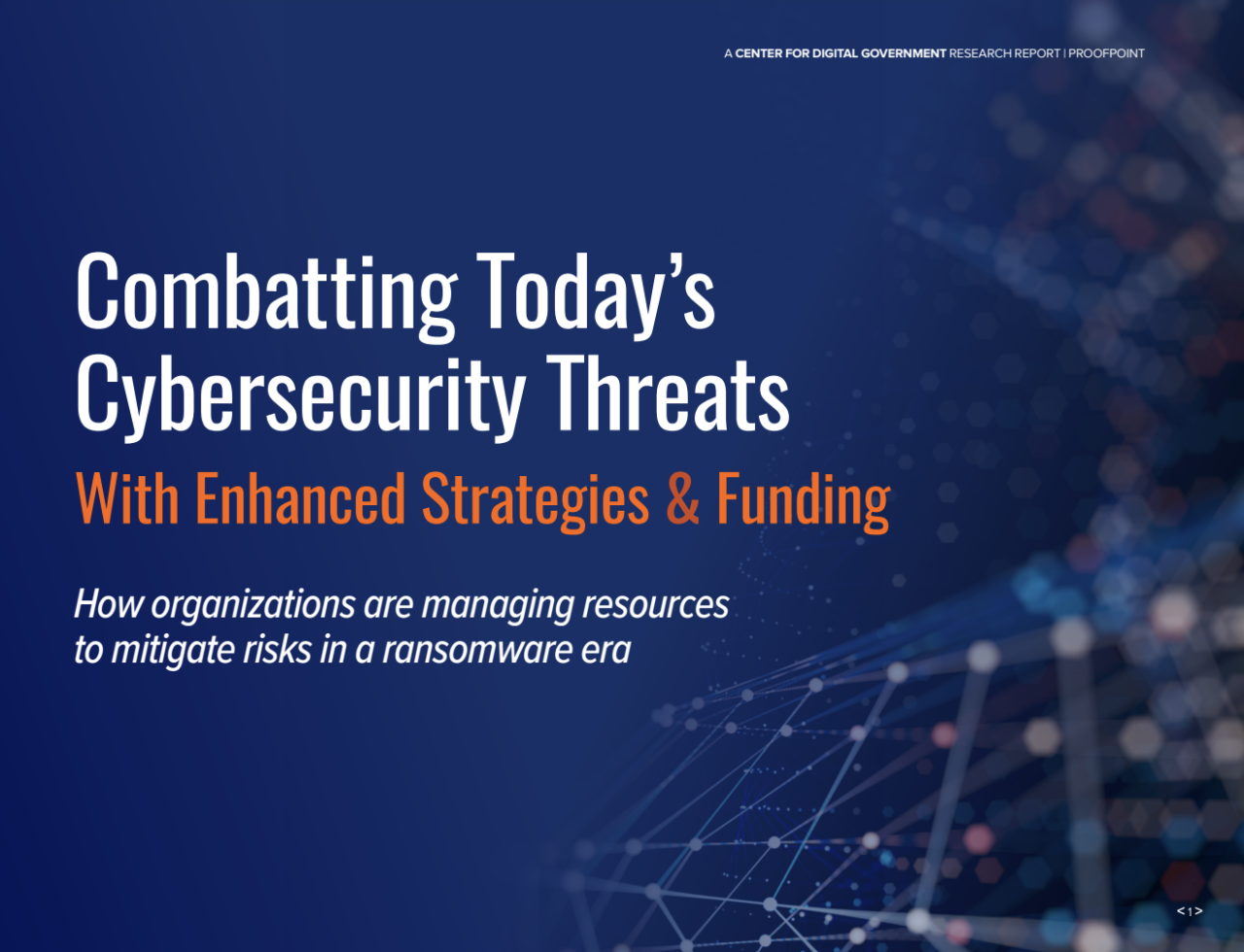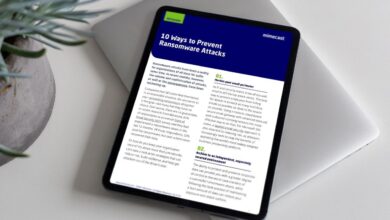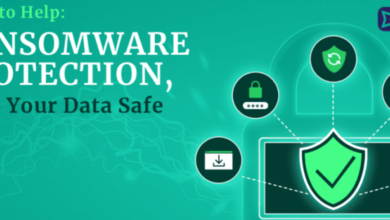
A Reactive Cybersecurity Strategy Is No Strategy At All
A reactive cybersecurity strategy is no strategy at all. Think of it like this: would you wait until your house is on fire before calling the fire department? Cybersecurity is the same; reacting to attacks after they happen is far too late. This post dives into why a purely reactive approach is a recipe for disaster, highlighting the vulnerabilities, financial burdens, and reputational damage it can cause.
We’ll then explore the crucial elements of a proactive strategy and how to effectively integrate both reactive and proactive measures for comprehensive protection.
We’ll examine real-world examples of breaches made worse by reactive responses, and dissect the financial and legal consequences of this approach. We’ll also delve into the proactive measures you can implement, from threat intelligence gathering to vulnerability assessments and security awareness training. The goal? To build a robust cybersecurity posture that anticipates threats and minimizes damage, not just cleans up the mess after the fact.
Defining a Reactive Cybersecurity Strategy
A reactive cybersecurity strategy, in its purest form, is one that addresses threats onlyafter* they have occurred. Instead of proactively preventing attacks, this approach focuses solely on responding to breaches and mitigating their damage. This often leads to significant financial losses, reputational damage, and legal repercussions. It’s a firefighting approach, constantly putting out fires instead of preventing them from starting.Reactive Cybersecurity Approach CharacteristicsA purely reactive approach is characterized by a lack of preventative measures.
Organizations relying on this strategy typically lack robust security controls, regular security assessments, and employee security training. They may have minimal or outdated security software, and their incident response plan, if one exists, is often poorly defined and untested. The emphasis is on damage limitation rather than prevention.
The Typical Response Cycle in a Reactive Strategy
The typical response cycle in a reactive strategy follows a predictable pattern: Detection of a security incident (often by an external source or a user reporting a problem), initial containment efforts (often rushed and incomplete), investigation (which may be lengthy and costly), remediation (fixing the vulnerability or damage), and finally, recovery (getting systems and data back online). This entire process is often reactive, stressful, and inefficient, resulting in prolonged downtime and potential data loss.
Examples of Reactive Measures
Reactive measures primarily involve damage control and incident response. Incident response includes activities like containing the breach, identifying the source, investigating the extent of the compromise, recovering data, and notifying affected parties. Damage control might involve public relations efforts to minimize negative publicity, legal actions to address potential lawsuits, and financial measures to cover losses. For example, a company might react to a ransomware attack by paying the ransom (a highly controversial and often ineffective reactive measure), restoring data from backups, and patching the exploited vulnerability.
Comparison of Reactive and Proactive Strategies
Reactive strategies are fundamentally different from proactive strategies. Proactive strategies emphasize prevention through measures like security awareness training, vulnerability scanning, penetration testing, intrusion detection systems, and strong access controls. They focus on identifying and mitigating vulnerabilitiesbefore* they can be exploited. In contrast, reactive strategies address problems only after they occur, resulting in a higher cost and greater risk.
A proactive strategy is like installing a burglar alarm, while a reactive strategy is like calling the police after a burglary has already taken place.
Resource Allocation: Reactive vs. Proactive
The following table illustrates the significant differences in resource allocation between reactive and proactive cybersecurity strategies.
| Strategy Type | Resource Allocation (Personnel) | Resource Allocation (Budget) | Response Time |
|---|---|---|---|
| Reactive | Higher during incidents; potentially insufficient for prevention | Higher in the long run due to incident costs; lower upfront investment | Slow; measured in days, weeks, or even months |
| Proactive | Consistent investment in security personnel; dedicated teams | Higher upfront investment; potentially lower long-term costs | Fast; measured in hours or days |
The Limitations of a Reactive Approach

A reactive cybersecurity strategy, one that solely addresses threatsafter* they’ve occurred, is fundamentally flawed. While seemingly cost-effective upfront, the long-term consequences of neglecting proactive measures far outweigh any initial savings. This approach leaves organizations vulnerable to significant damage, both financially and reputationally, ultimately undermining their long-term stability and success.Reactive measures are like putting out fires instead of preventing them.
While crucial in emergency situations, they can’t replace a robust, preventative approach. This reactive posture inherently exposes organizations to a range of vulnerabilities and risks that a proactive strategy actively mitigates.
Vulnerabilities Exposed by Reactive Measures
Relying solely on reactive measures leaves organizations exposed to a wide range of vulnerabilities. The delayed response time inherent in a reactive approach allows attackers more time to compromise systems, exfiltrate data, and cause extensive damage. This delayed response can lead to the spread of malware, the exploitation of zero-day vulnerabilities, and significant data breaches before any remediation efforts begin.
Critical systems may remain compromised for extended periods, leading to operational disruptions and financial losses. Furthermore, a reactive approach often lacks the comprehensive understanding of an organization’s attack surface necessary for effective mitigation. This means that even after a breach is identified and contained, the underlying vulnerabilities that allowed the attack to occur in the first place may remain unaddressed, leaving the organization vulnerable to future attacks.
Financial Implications of a Reactive-Only Strategy
The financial burden of a purely reactive cybersecurity strategy is substantial. The costs associated with incident response, including forensic investigations, legal fees, regulatory fines, and remediation efforts, can be astronomical. Beyond direct costs, there are indirect costs to consider, such as lost productivity, reputational damage, and the cost of restoring lost data and systems. A study by IBM’s Cost of a Data Breach Report consistently demonstrates the high cost of data breaches, with average costs reaching millions of dollars.
These costs are significantly higher for organizations that lack robust preventative measures and rely solely on reactive responses. For example, a small business might face bankruptcy after a ransomware attack if they lack adequate backups and insurance, whereas a larger corporation with a proactive strategy might experience significantly lower losses.
Legal and Reputational Risks of Reactive Strategies
Organizations that rely solely on reactive cybersecurity strategies face significant legal and reputational risks. Data breaches can result in hefty fines and penalties under regulations like GDPR and CCPA. Furthermore, class-action lawsuits from affected individuals and regulatory investigations can further strain an organization’s resources. The reputational damage caused by a data breach can be equally devastating, leading to loss of customer trust, damage to brand image, and difficulty attracting investors.
The negative publicity surrounding a breach can linger for years, impacting the organization’s long-term viability. For example, the Equifax data breach, resulting from a failure to patch a known vulnerability, led to significant financial losses, legal battles, and lasting reputational damage.
Examples of Cybersecurity Breaches Exacerbated by Reactive Responses, A reactive cybersecurity strategy is no strategy at all
Numerous real-world examples highlight the dangers of a reactive-only approach. The Target breach of 2013, where attackers gained access through a third-party vendor, showcased the limitations of a reactive strategy. The delayed detection and response allowed the attackers to steal millions of customer records. Similarly, the NotPetya ransomware attack in 2017, which spread rapidly due to vulnerabilities in Ukrainian accounting software, demonstrated the devastating consequences of a lack of proactive security measures.
The widespread impact underscored the critical need for preventative security practices to avoid catastrophic damage.
Hypothetical Scenario Illustrating Reactive Strategy Failure
Imagine a small online retailer relying solely on reactive measures. A phishing campaign successfully compromises an employee’s account, granting attackers access to the company’s internal network. Due to a lack of intrusion detection systems and regular security audits, the breach goes unnoticed for weeks. During this time, the attackers exfiltrate customer data, install ransomware, and disrupt the retailer’s operations.
The resulting financial losses from data recovery, legal fees, and lost sales, coupled with the damage to the company’s reputation, ultimately force the retailer out of business. This scenario illustrates the catastrophic consequences of neglecting proactive cybersecurity measures.
Elements of a Proactive Cybersecurity Strategy

A proactive cybersecurity strategy shifts the focus from damage control to prevention. Instead of reacting to breaches, it aims to identify and mitigate threats before they can exploit vulnerabilities. This approach requires a multi-faceted strategy encompassing several key elements, working together to create a robust defense. It’s an investment in long-term security, reducing the likelihood and impact of future incidents.
Threat Intelligence Gathering
Threat intelligence is the lifeblood of a proactive strategy. It involves actively collecting and analyzing information about potential threats, vulnerabilities, and attack vectors. This data comes from various sources, including public databases (like the National Vulnerability Database), security research firms, open-source intelligence (OSINT) gathering, and internal security logs. By understanding the evolving threat landscape, organizations can prioritize their defenses and anticipate emerging risks.
For example, knowing a specific malware variant is targeting a particular industry allows for proactive measures like deploying specific anti-malware signatures or hardening systems against known attack vectors. This predictive capability is crucial for preventing attacks before they even begin.
Vulnerability Assessments and Penetration Testing
Regular vulnerability assessments systematically scan systems and applications for known weaknesses. These assessments identify potential entry points for attackers, such as outdated software, misconfigured servers, or weak passwords. Penetration testing, on the other hand, simulates real-world attacks to uncover vulnerabilities that automated scans might miss. Pen testers attempt to exploit identified weaknesses to determine the impact and potential damage.
A combination of both provides a comprehensive understanding of an organization’s security posture. For instance, a vulnerability assessment might reveal an outdated version of a web server, while a penetration test could demonstrate how an attacker could exploit this vulnerability to gain unauthorized access.
Proactive Security Awareness Training
Effective security awareness training is not a one-time event but an ongoing process. Employees are often the weakest link in the security chain. A comprehensive program should cover topics such as phishing scams, social engineering tactics, password security, and safe browsing practices. Training should be engaging, relevant, and tailored to the specific roles and responsibilities of employees.
Regular simulated phishing campaigns, for example, help employees recognize and report suspicious emails. This proactive approach reduces the likelihood of successful social engineering attacks, a major cause of data breaches in many organizations. Real-world examples of successful phishing attacks, highlighting the consequences, are extremely effective in reinforcing training.
Security Automation
Automation is key to efficient and effective proactive security. Automating tasks such as vulnerability scanning, patching, and incident response significantly reduces the time and resources required to maintain a strong security posture. Security Information and Event Management (SIEM) systems, for example, can automatically collect and analyze security logs from various sources, identifying suspicious activities in real-time. This allows for faster response times and minimizes the impact of potential incidents.
Automation also reduces human error, a common cause of security vulnerabilities. Imagine the impact of automating the patching process across hundreds of servers – it’s far more efficient and less prone to mistakes than manual patching.
Bridging the Gap
A purely reactive or proactive cybersecurity strategy is inherently flawed. Reactive approaches, while necessary for addressing immediate threats, lack the foresight to prevent future attacks. Conversely, a solely proactive approach, while minimizing vulnerabilities, can’t guarantee complete protection against sophisticated or zero-day exploits. The most effective strategy lies in a balanced integration of both, creating a robust, multi-layered defense.Reactive strategies excel at damage control and incident response.
They’re adept at identifying and containing breachesafter* they occur. However, they’re inherently costly, both financially and reputationally. Proactive strategies, on the other hand, focus on prevention. They involve regular vulnerability assessments, security awareness training, and implementing robust security controls. While proactive measures significantly reduce the likelihood of breaches, they cannot eliminate the risk entirely.
Reactive and Proactive Strategy Strengths and Weaknesses
Reactive strategies are strong in incident response and damage limitation but weak in prevention and cost-effectiveness. Proactive strategies excel at prevention and cost savings in the long run but are weak in immediate response to unforeseen attacks. A balanced approach leverages the strengths of both.
Integrating Reactive and Proactive Elements
Effective integration involves a continuous feedback loop. Proactive measures identify and mitigate vulnerabilities, reducing the likelihood of successful attacks. However, a robust incident response plan (IRP) remains crucial. Even with a strong proactive stance, breaches can still occur. The IRP ensures swift containment and minimizes damage when incidents do happen.
This feedback loop allows for continuous improvement of both proactive and reactive capabilities. Data from incident responses informs improvements to the proactive security posture, creating a more resilient system.
Ideal Workflow Combining Reactive and Proactive Measures
Imagine a flowchart: The process begins with proactive measures such as vulnerability scanning, penetration testing, and security awareness training. This leads to a strengthened security posture. If an attack occurs despite these measures, the process moves to the reactive phase, triggered by an intrusion detection system (IDS) or security information and event management (SIEM) system alert. The incident response plan is activated, leading to containment, eradication, recovery, and post-incident analysis.
This analysis then feeds back into the proactive measures, strengthening the defenses for future threats.
Incident Response Planning within a Proactive Framework
Even with a robust proactive strategy, a comprehensive incident response plan is paramount. It details procedures for handling security incidents, from detection to recovery and post-incident analysis. This plan should be regularly tested and updated to reflect evolving threats and vulnerabilities. A well-defined IRP minimizes downtime, data loss, and reputational damage in the event of a successful attack.
It ensures a coordinated and effective response, crucial for mitigating the impact of any security breach.
Proactive Mitigation versus Reactive Response: A Scenario
Scenario 1: Proactive Strategy Mitigates Potential BreachA financial institution implements a robust proactive security strategy. This includes regular penetration testing, employee security awareness training focusing on phishing scams, and multi-factor authentication (MFA) for all employees. A phishing campaign targeting the institution is launched. Due to the employee training, the majority of employees identify the phishing emails as fraudulent and do not click on the malicious links.
The MFA implementation prevents unauthorized access even if a few employees fall victim to the scam. The proactive measures successfully mitigate the potential breach. Scenario 2: Reactive Strategy Only – A Breach OccursAnother financial institution relies solely on a reactive strategy. They lack regular security assessments and employee training on cybersecurity best practices. A similar phishing campaign targets this institution.
Numerous employees fall victim to the phishing emails, leading to a successful breach. The institution only reacts after the breach has occurred, resulting in significant data loss, financial losses, and reputational damage. The reactive measures, while successful in containing the immediate damage, cannot undo the initial breach and its consequences. The recovery process is lengthy and costly.
Measuring the Effectiveness of a Cybersecurity Strategy: A Reactive Cybersecurity Strategy Is No Strategy At All
A proactive cybersecurity strategy isn’t just about implementing security measures; it’s about continuously evaluating their effectiveness and adapting to evolving threats. Measuring this effectiveness requires a robust system of Key Performance Indicators (KPIs), incident analysis, and data-driven decision-making. This ensures that resources are allocated efficiently and the organization remains resilient against cyberattacks.
A reactive cybersecurity strategy is a recipe for disaster; you’re always playing catch-up. Building secure applications from the ground up is crucial, and that’s where understanding the evolving landscape of app development comes in. Check out this insightful article on domino app dev the low code and pro code future to see how proactive development practices can strengthen your security posture.
Ultimately, proactive security, integrated from the start, is the only true defense against the ever-evolving threat landscape; a reactive approach simply won’t cut it.
Effective measurement allows for continuous improvement, highlighting areas of strength and weakness in your security posture. By tracking metrics, analyzing incidents, and leveraging data analytics, you can refine your strategy, optimize resource allocation, and demonstrate the value of your cybersecurity investments to stakeholders.
Key Performance Indicators (KPIs) for Proactive Cybersecurity
Selecting the right KPIs is crucial for accurately assessing the effectiveness of your proactive cybersecurity strategy. These metrics should reflect the goals of your strategy and provide actionable insights. Focusing on a few key metrics is better than trying to track everything.
| Metric | Target | Actual Result | Status |
|---|---|---|---|
| Mean Time To Detect (MTTD) | < 24 hours | 18 hours | Green |
| Mean Time To Respond (MTTR) | < 4 hours | 3 hours | Green |
| Number of successful phishing attacks | 0 | 1 | Yellow |
| Number of vulnerabilities remediated within SLA | 95% | 92% | Yellow |
Tracking and Analyzing Security Incidents
A thorough analysis of security incidents is vital for improving future responses. This involves documenting the incident timeline, identifying root causes, and assessing the impact. This data informs improvements in preventative measures, incident response plans, and employee training.
For example, analyzing a phishing attack might reveal vulnerabilities in employee training or weaknesses in email filtering. This analysis should lead to targeted improvements, such as enhanced security awareness training or the implementation of more robust email security solutions.
Data Analytics for Proactive Security Decisions
Data analytics plays a crucial role in informing proactive security decisions. By analyzing security logs, network traffic, and other data sources, organizations can identify patterns and anomalies that may indicate an impending attack. This allows for preventative measures to be implemented before an incident occurs.
For instance, machine learning algorithms can be used to detect unusual login attempts or network traffic patterns, providing early warnings of potential threats. This allows security teams to proactively investigate and mitigate these risks.
Examples of Effective Cybersecurity Strategy Reports
Reports should be concise, visually appealing, and focus on key findings. They should clearly communicate the effectiveness of the cybersecurity strategy and highlight areas for improvement. Executive summaries should provide a high-level overview of the key metrics and their status. Detailed sections can then provide more in-depth analysis.
A well-structured report might include sections on key metrics, incident analysis, and recommendations for improvement. Visualizations, such as charts and graphs, can effectively communicate complex data.
Sample Cybersecurity Report
This sample report uses a table to present key metrics and their status. The use of color-coded status indicators (Green, Yellow, Red) provides a quick visual assessment of performance against targets.
| Metric | Target | Actual Result | Status |
|---|---|---|---|
| Number of security awareness training completions | 100% | 98% | Yellow |
| Average time to patch critical vulnerabilities | 72 hours | 48 hours | Green |
| Number of malware infections | 0 | 2 | Red |
| Percentage of endpoints with updated antivirus software | 100% | 99% | Yellow |
Conclusion
In the ever-evolving landscape of cyber threats, a proactive approach is no longer a luxury, but a necessity. While reactive measures are essential for incident response, relying solely on them is a dangerous gamble. By understanding the limitations of a purely reactive strategy and implementing a robust proactive approach, you can significantly reduce your risk exposure, protect your valuable data, and safeguard your organization’s reputation.
Remember, prevention is always better than cure, especially in the digital world. Investing in a comprehensive, proactive cybersecurity strategy is an investment in your future – and it’s an investment that will pay off handsomely.
FAQ
What’s the biggest difference between a reactive and proactive cybersecurity strategy?
A reactive strategy responds to threats
-after* they occur, while a proactive strategy anticipates and prevents threats
-before* they happen.
How much does a proactive cybersecurity strategy cost?
The cost varies greatly depending on the size and complexity of your organization, but the long-term cost savings from preventing breaches far outweigh the initial investment.
Can I implement a proactive strategy without any specialized software?
While specialized software can greatly enhance your proactive efforts, many basic proactive measures, like strong password policies and employee training, can be implemented without expensive tools.
What are some common indicators that my current strategy is too reactive?
Frequent security breaches, high incident response costs, and a lack of preventative measures are all signs you need a more proactive approach.





